SATO Wataru Laboratory
Spontaneous facial mimicry in response to dynamic facial expressions
(Sato, W. & Yoshikawa, S.: Cognition)
Based on previous neuroscientific evidence indicating activation of the mirror neuron system in response to dynamic facial actions, we hypothesized that facial mimicry would occur while subjects viewed dynamic facial expressions.
To test this hypothesis, dynamic/static facial expressions of anger/happiness were presented using computer-morphing (Experiment 1) and videos (Experiment 2). The subjects°« facial actions were unobtrusively videotaped and blindly coded using Facial Action Coding System (FACS; P. Ekman & W. V. Friesen, 1978).
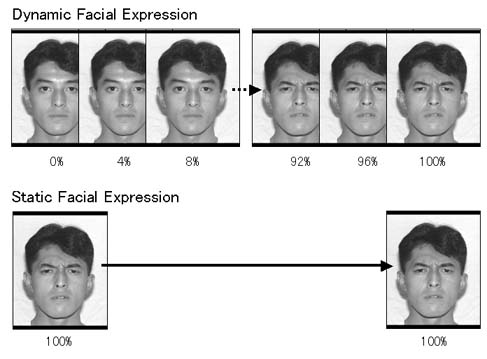
In the dynamic presentations common to both experiments, brow lowering, a prototypical action in angry expressions, occurred more frequently in response to angry expressions than to happy expressions. The pulling of lip corners, a prototypical action in happy expressions, occurred more frequently in response to happy expressions than to angry expressions in dynamic presentations.
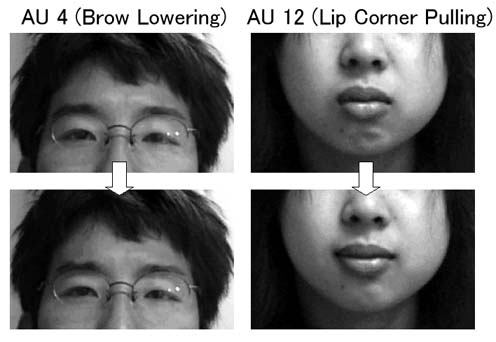
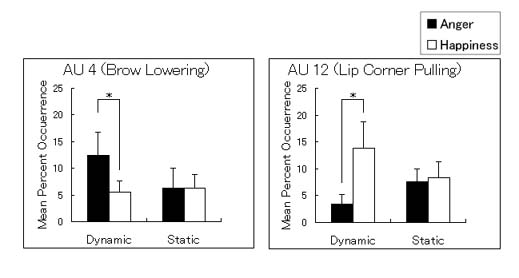
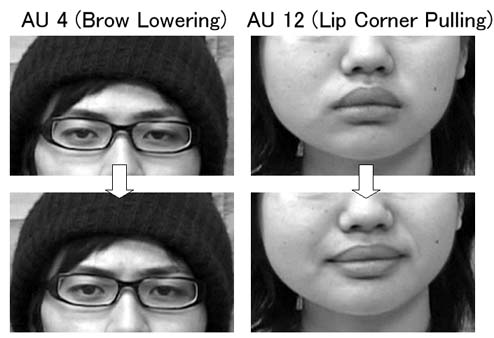
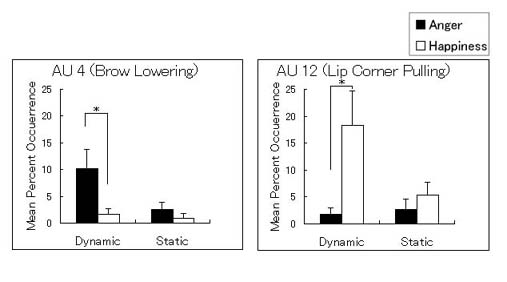
Additionally, the mean latency of these actions was less than 900ms after the onset of dynamic changes in facial expression. Naive raters recognized the subjects°« facial reactions as emotional expressions, with the valence corresponding to the dynamic facial expressions that the subjects were viewing.
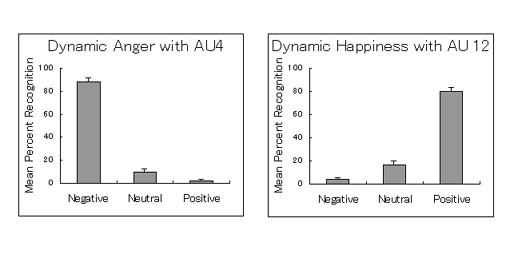
These results indicate that dynamic facial expressions elicit spontaneous and rapid facial mimicry, which functions both as a form of intra-individual processing and as inter-individual communication.
Return to
Recent Research.
Return to
Main Menu.





